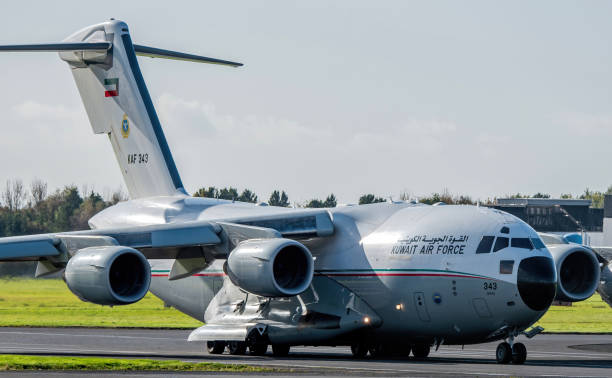Introduction Within a decade, private jet cabins are making cutting-edge interiors. From digital skylines and bright seats to eye-tracking functionality and immersive soundscapes, innovative amenities are transforming even the longest flight.
Similarly, the private jet charter industry has always been associated with exclusivity, luxury and personalized travel experiences. Therefore, technology continues evolving at an unprecedented pace, and the platform at which private jet charters are transforming.
So, from an advanced booking platform to cutting-edge onboard amenities, technological innovations are shaping the future of private jet charter in once unimaginable ways.
In this article, we will emphasize ways technology is revolutionized in booking private jets.
Ways Technology Altered Private Jet Booking
The ways technology has changed how private jet charters operate are mentioned below.
1. Screen Time
Within the next few years, replacing traditional windows in private jets with curved, high definition 4K OLED displays could revolutionize the in-flight experience.
Full-height displays could vividly replicate the breathtaking landscapes below, immersing travelers in the world outside.
These innovative visual portals would serve more than aesthetic purposes; they could seamlessly integrate information overlays, providing real-time flight data or scenic highlights.
In addition, the potential for entertainment is limitless transforming the cabin into a gaming haven with high-resolution visuals that elevate the in-flight gaming experience to new heights.
2. Eco-Friendly And Sustainable Initiatives
Technological advancements are significantly transforming the aviation industry, particularly in aircraft design.
The push for more fuel-efficient and eco-friendly options has led to exploring electric and hybrid-electric propulsion systems as viable alternatives to traditional jet engines.
In addition to propulsion technologies, the private jet charter sector is increasingly adopting sustainable aviation fuels (SAFs). You can also consider booking a Private jet charter Kuwait. Their integration into the aviation fuel supply chain could play a pivotal role in meeting the industry’s sustainability goals, making air travel greener and more responsible than ever.
Derived from renewable resources, SAFs present a promising solution for addressing carbon emissions associated with air travel.
3. In-Flight Connectivity
As technology enables us to stay connected wherever we travel, private jet charters offer in-flight connectivity.
High-speed wi-fi, onboard entertainment, and satellite communication platforms are becoming standard offerings. These facilities allow passengers to communicate, work, and unwind during their journey.
This is important for business travelers who must remain connected and predictive in the air.
Similarly, AR (augmented reality) and VR (virtual reality) also find their way into private jet cabins, enhancing the in-flight experience.
Besides, you can enjoy immersive entertainment, exploring destination previews, and conduct virtual meetings, all from the comfort of the private jet.
4. AI And Data Analytics
By analyzing weather patterns, air traffic, and jet streams, AI can suggest the most fuel-efficient routes, saving costs and reducing carbon emissions.
Real-time data allows for dynamic route adjustments during flights to avoid turbulence or air traffic congestion, enhancing passenger safety and comfort.
Leveraging AI and data analytics in flight route optimization enhances operational efficiency, safety, and passenger satisfaction in the aviation industry.
5. Hands Free
The emergence of intelligent lavatories signifies a shift towards nearly hands-free experiences, which enhance travelers’ comfort and convenience.
Incorporating advanced sensors, these restrooms can automate functions such as faucets and showers, making hygiene effortless.
Aviation has pushed this concept further by implementing AI algorithms that allow voice-controlled operations. These algorithms enable passengers to open and close doors, adjust lighting and activate water simply by speaking. This could offer a seamless experience, particularly for travelers who value privacy and efficiency.
Looking toward the future, holographic light switches could revolutionize interaction with the space, eliminating physical contact.
6. Seat Change
The future of jet seating is set to enhance our flying experience with remarkable innovations. Imagine recliners that provide comfort and adapt to your needs in real time.
These seats will be embedded with sensors that monitor various aspects, such as size, weight, pressure distribution, and even body temperature.
Even more fascinating is their ability to generate power by converting your body heat into electricity, ensuring they are always operational without requiring external power sources.
As you drift off, these intelligent seats will intuitively widen and recline to provide you with the most comfortable sleeping position.
Thus, the new generation of jet seats promises to transform air travel into a personalized and luxurious experience, making long flights more like a restful retreat.
Final Thoughts
The future of air travel is not just about getting from point A to point B; it’s about transforming the journey into something extraordinary.
Integrating these technologies enhances the user experience and reflects a growing trend toward personalization and automation in travel. These innovations promise to reduce emissions and mitigate noise pollution, creating a more sustainable flying experience.

